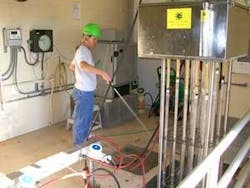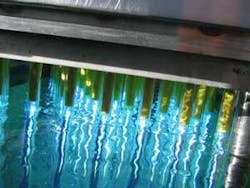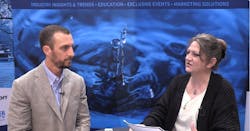The UV disinfection system’s vertical orientation provides a smaller footprint, ease of operation and modular design.
Click here to enlarge imageProgrammable logic controllers (PLCs) make the LP/HO amalgam system easy to operate. The PLCs offer energy and lamp savings through either complete module or incremental flow pacing. The controllers are flexible, expandable and modifiable. They also have greater communication capabilities with other PLCs and SCADA systems and a range of operator interface choices.
Excellent Fecal Results
Since installing the new UV system four years ago, the Erie WRF has had excellent fecal results. Its in-house laboratory program ensures it treats wastewater to meet federal- and state-mandated regulations as well as discharge permit limits. Erie’s permit is fairly tight with 176/100 ml for a monthly average.
Since installing the new system, the plant has not had a single violation with results normally averaging less than 20/100 Ml. The new permit for 2008, which is also for an additional 0.4 MGD of flow, has even stricter limits of 126/100 ml of E. coli for a monthly average.
“We have no doubt that the Siemens system will allow us to meet our permit limits successfully and consistently,” says Smith.
About the Authors
Adam Donnellan is director of technical sales for UV products at Siemens Water Technologies in Allendale, New Jersey, USA. Contact: 201-760-0364 or at [email protected]
Jon Mays is the chief water reclamation facility operator and a Class A operator for the town of Erie (Colorado, USA) WRF. Contact: 303-926-2895 or at [email protected]





